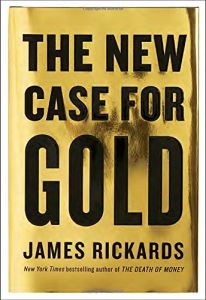Join getAbstract to access the summary!

Join getAbstract to access the summary!
James Rickards
The New Case for Gold
Portfolio, 2016
What's inside?
Contrarian financial guru James Rickards promotes gold as a legitimate asset class.
Recommendation
Financial guru James Rickards is a contrarian, skeptical of central banks and critical of Wall Street. He offers a measured analysis of gold as an asset class and a sober look at the forces that affect its value. Rickards is bullish on gold – he sees its price rising one day to $10,000 an ounce, but at times, he can seem a bit paranoid. He regards inflation as a socialist tool of wealth distribution and frets over the specter of confiscatory government policies. After reading his concise advice, even an optimistic investor might consider gold as a hedge. While never giving investment advice and affirming that the opinions herein are entirely the author’s, getAbstract recommends his thoughtful, surprising approach to investors seeking another view on gold.
Summary
About the Author
James Rickards wrote the bestsellers The Death of Money and Currency Wars. He is the editor of the newsletter Strategic Intelligence.



















Comment on this summary